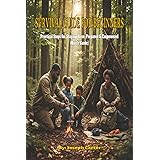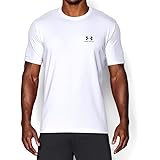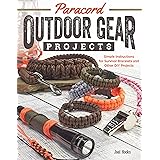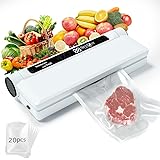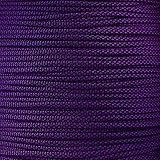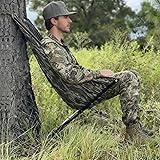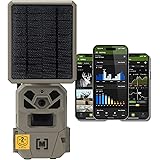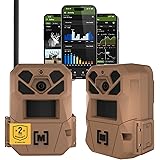Crafting Your Essential Survival Medicine Medium Trauma Bag: A Comprehensive Guide
As highlighted in the accompanying video from Nurse Amy at DoomandBloom.net, possessing a well-equipped survival medicine medium trauma bag is not just a convenience; it’s a critical component of personal and family preparedness. This compact yet comprehensive medical kit is designed to address a wide range of injuries and conditions, especially when professional medical help is not immediately available. Building your own robust medical kit empowers you to act decisively and effectively during emergencies, ensuring you’re ready for unexpected medical challenges in austere environments. This guide expands on the essential contents and principles discussed in the video, offering deeper insights into why each item earns its place in your crucial trauma bag.
The Foundation: Understanding Your Trauma Bag’s Design
A well-designed trauma bag serves as the backbone of your medical preparedness, offering both portability and organized access to vital supplies. As Nurse Amy demonstrates, the bag itself is a key piece of equipment, balancing lightweight construction with rugged durability. Weighing only about 5 pounds, this particular medium trauma bag features multiple carrying options, including a sturdy handle, a Molle system for attachment to other gear, and a convenient shoulder strap for rapid deployment. The internal organization is equally impressive, unfolding to reveal three distinct sections—one larger and two smaller yet spacious—allowing for logical categorization of different medical components.
First Line of Defense: Personal Protection and Initial Wound Care
Before you even begin treating a patient, protecting yourself is paramount, making personal protective equipment the first and most accessible items in any survival medicine medium trauma bag. Maintaining sterility and preventing cross-contamination are non-negotiable in emergency medical scenarios. The video emphasizes easy access to vital items like gloves and hand sanitizer, ensuring you can quickly don protection and clean your hands before touching any wound or patient.
Gloves and Sanitization: Prioritizing Safety
The kit thoughtfully includes a generous supply of nitrile gloves, with an initial pack of ten and an additional ten strategically placed within the bleeding pack, totaling 20 gloves for various uses. Nitrile gloves offer superior protection against bloodborne pathogens and other contaminants, proving crucial for both the rescuer and the patient. Hand sanitizer complements the gloves, providing a quick and effective way to cleanse hands when soap and water are unavailable. Always prioritize this step; it’s a simple measure that can prevent serious infections in a crisis scenario.
Antiseptics and Healing Agents: Beyond the Basics
Effective wound care in an emergency hinges on proper cleaning and the application of appropriate healing agents. Your trauma bag should contain a diverse array of antiseptics and treatments to manage different types of injuries, from minor cuts to more severe burns. Understanding when and how to use each product can significantly impact recovery outcomes, making this section particularly vital for any aspiring survival medic.
- **Raw Honey:** This natural wonder is an incredibly versatile and powerful component of the trauma bag, especially in environments where pharmaceuticals might be scarce. Raw honey possesses natural antibacterial and anti-inflammatory properties, making it excellent for treating wounds, burns, and lacerations by drawing out moisture and creating an inhospitable environment for bacteria. Furthermore, it functions as an oral antibiotic, can effectively treat low blood sugar due to its natural sugars, and even serves as a delightful flavoring for teas, highlighting its multi-faceted utility beyond direct wound application.
- **Burn Gel with Lidocaine:** For second-degree burns, a specialized burn gel containing Lidocaine is indispensable, providing immediate pain relief while supporting the healing process. The Lidocaine acts as a local anesthetic, mitigating the intense discomfort associated with burns, which can be debilitating in a survival situation. This dual-action approach not only alleviates suffering but also creates a more conducive environment for the body’s natural restorative functions.
- **Silver Cream and Triple Antibiotic Ointment:** Both silver cream and triple antibiotic ointment offer powerful antiseptic benefits, working to prevent bacterial infections in open wounds. Silver has long been recognized for its broad-spectrum antimicrobial properties, making silver cream an excellent choice for various skin injuries. Triple antibiotic ointment, on the other hand, combines several antibiotics to target a wider range of bacteria, offering an alternative or complementary treatment for wound care. Nurse Amy reminds us that these can be used interchangeably, offering flexibility in your treatment approach.
- **Sting Relief:** Bug bites and stings are common nuisances in outdoor or austere settings, and effective relief is crucial for comfort and preventing secondary issues. Sting relief wipes or creams, often containing numbing medications, quickly alleviate itching, pain, and inflammation. This small but significant inclusion prevents minor irritations from escalating into more serious problems, especially if allergic reactions are a concern or sleep is vital.
- **BZK Wipes:** Benzalkonium Chloride (BZK) wipes are exceptional for cleaning hands before gloving up and are particularly effective for cleaning wounds without causing cellular damage. Unlike some harsher antiseptics, BZK is non-cytotoxic, meaning it won’t harm the delicate new cells forming during the healing process. These wipes also serve a unique purpose: one or two BZK wipes can be dissolved in potable water to create an antiseptic solution, which, when combined with a 60cc syringe, becomes an effective tool for wound irrigation—a critical step in preventing infection.
- **Betadine:** While a powerful antiseptic, Betadine (povidone-iodine) should be used judiciously, primarily for the initial cleaning of a wound to aggressively reduce bacterial load. It’s important to note, as Nurse Amy advises, that repeated use directly on an open wound can inhibit cellular regeneration. After the initial cleaning, transitioning to gentler antiseptics like BZK wipes or ointments is recommended to foster optimal healing.
- **Alcohol Wipes:** These are primarily designated for cleaning instruments rather than directly applied to wounds, where they can be cytotoxic and impede new cell growth. Alcohol is highly effective at sanitizing metal tools like tweezers, scissors, and hemostats, ensuring they are clean before and after use. Keeping instruments sterile is just as important as keeping wounds clean, emphasizing the need for dedicated supplies for both.
Mastering Bleeding Control: Stopping the Flow
Uncontrolled bleeding is one of the most immediate life threats in any trauma situation, making robust bleeding control measures absolutely essential within your survival medicine medium trauma bag. The ability to quickly and effectively stop severe hemorrhage can mean the difference between life and death. Your kit must contain a range of tools and materials specifically designed for this purpose, from basic pressure application to more advanced hemostatic agents.
Direct Pressure and Compression Bandages
The most fundamental and often most effective method for controlling bleeding is direct pressure, which Nurse Amy rightly emphasizes as capable of stopping 80 to 90 percent of all hemorrhages. A substantial supply of non-sterile gauze is included for this purpose, allowing you to apply direct, sustained pressure to a wound. Once bleeding is controlled, a pressure bandage can be applied to maintain constant compression, freeing your hands for other critical tasks and preventing re-bleeding, thus securing the wound effectively for transport or further treatment.
Hemostatic Agents: Advanced Bleeding Solutions
For more severe or persistent bleeding, hemostatic agents provide an invaluable layer of advanced intervention. These specialized products are designed to accelerate blood clotting, offering a crucial advantage when direct pressure alone is insufficient or difficult to maintain. They are a game-changer for serious trauma.
- **Celox:** The kit includes two packets of Celox, a modern hemostatic agent renowned for its effectiveness in stopping severe bleeding. Celox works by forming a robust clot upon contact with blood, irrespective of the body’s natural clotting factors, making it particularly useful in scenarios where normal clotting is impaired. Its granular form allows it to be poured directly into the wound, providing rapid hemostasis.
- **Cayenne Pepper:** A surprising yet effective traditional hemostatic agent, cayenne pepper, specifically varieties rated 35,000 Scoville Heat Units (HU) or higher, can be a valuable addition. Nurse Amy cautions that while higher Scoville units increase efficacy, they also increase the risk of respiratory distress if inhaled during application. Therefore, careful handling is essential when using this organic option, ensuring both efficacy and user safety during a stressful situation.
The Lifesaving Tourniquet
A tourniquet is a last-resort but potentially lifesaving device for severe extremity bleeding that cannot be controlled by other means. Its inclusion in your trauma bag is non-negotiable for catastrophic hemorrhage. Proper training in tourniquet application is vital to ensure its effective and safe use, as incorrect application can lead to further injury. This critical item underscores the comprehensive nature of a well-prepared medical kit.
Essential Tools and Instruments for Austere Care
Beyond dressings and medications, a range of durable instruments is vital for effective medical care in the field. These tools facilitate everything from accessing injuries to performing minor procedures, providing the versatility needed for various emergency scenarios. Having high-quality, reliable instruments ensures you are not hampered by inadequate tools during critical moments.
Cutting and Securing: Scissors and Tapes
No medical kit is complete without robust cutting and securing implements. The kit thoughtfully includes a pair of heavy-duty, stainless steel scissors, designed to cut through tough materials like denim, ensuring quick access to an injury. Alongside these, you’ll find both adhesive medical tape for securing dressings and, notably, duct tape, which Nurse Amy aptly notes has “a million different uses,” extending far beyond medical applications into general utility and makeshift solutions. These items are fundamental for improvisation and stability.
Detailed Instrument Pack: Precision in a Crisis
A dedicated instrument pack within the survival medicine medium trauma bag provides the precision tools needed for more intricate tasks. This compact collection includes essential items such as a pen light for examining wounds in low light, fine-tipped tweezers for splinter or debris removal, Iris scissors for delicate cutting, and a hemostat for clamping small bleeders or assisting with wound closure. Five tongue depressors are included for oral examinations or makeshift splints, along with a thermometer for monitoring patient temperature, offering comprehensive diagnostic capabilities.
Strategies for Wound Closure and Protection
Once a wound is cleaned and bleeding is controlled, the next crucial step is appropriate wound closure and protection to prevent infection and promote healing. Your trauma bag should provide multiple options for closing wounds, adapting to the size, depth, and location of the injury, ensuring you have the flexibility to manage various scenarios effectively.
Basic Wound Closure: From Band-Aids to Super Glue
The kit features a comprehensive array of wound closure methods, starting with an impressive 100 assorted band-aids for minor cuts and abrasions. For more significant lacerations, Steri-strips and self-made “butterflies” from duct tape offer non-invasive closure options, pulling wound edges together. Super glue provides an alternative for small, clean cuts where surgical sutures might be impractical or unavailable, effectively sealing the wound. For those with appropriate training, an instrument pack including a hemostat and potentially sutures offers a more advanced wound closure capability, underscoring the kit’s versatility.
Blister Care and Specialized Dressings
Moleskin is a standout inclusion for blister prevention and treatment, particularly crucial for those on the move. When cut into a donut shape, with the hole centered over the blister, moleskin creates a protective barrier that reduces friction and pressure on the injured area, allowing it to heal without further irritation. This simple yet effective solution prevents minor foot issues from becoming debilitating problems, maintaining mobility in a survival scenario.
Comprehensive Gauze and Dressing Selection
An extensive array of gauze and specialized dressings forms the bulk of the wound care supplies in any effective survival medicine medium trauma bag. These materials are essential for absorbing exudate, protecting wounds, and providing a clean barrier against external contaminants. Having a variety of sizes and types ensures you can adequately dress nearly any injury encountered.
Sterility and Absorbency: The Core of Wound Management
The kit includes a chux pad, perfect for creating a clean working surface in an austere environment, protecting supplies from contamination. For significant bleeding, a blood stopper dressing, comprising a 5×9 pad and two roller bandages, offers rapid and effective pressure application. Four ABD pads (abdominal pads) or combines are included for high absorbency on larger wounds, alongside 20 sterile 4×4 gauze pads, packed two per sterile pouch for convenience and hygiene. Five Telfa pads, known for their non-adherent properties, are ideal for burns or sensitive wounds, ensuring dressings don’t stick and cause further trauma upon removal. Additionally, five 2×2 gauze pads and four eye pads provide options for smaller injuries and ocular protection, completing a thorough assortment of absorbent materials.
Securement and Comfort: Coban’s Advantage
Coban, a self-adherent wrap, offers a superior method for securing dressings without sticking to the patient’s skin or hair. This elastic bandage adheres only to itself, providing firm, yet comfortable, compression that is easily removable without causing pain or pulling. Its presence in the trauma bag greatly enhances patient comfort and simplifies dressing changes, particularly useful in situations where skin integrity may be compromised or repeated applications are necessary.
Beyond Immediate Trauma: Comfort and General Support
A comprehensive survival medicine medium trauma bag extends its utility beyond direct wound management, incorporating items for general comfort, pain relief, and environmental challenges. These often-overlooked components significantly contribute to a patient’s overall well-being and recovery, addressing systemic issues that arise in emergency situations.
Pain Management and Skin Care
The kit includes 40 Ibuprofen tablets for effective pain and inflammation management, crucial for maintaining functionality and morale. Gold Bond Powder is also included, providing relief from chafing, moisture, and fungal issues, which are common problems in prolonged outdoor or austere conditions. These items address discomfort that, while not immediately life-threatening, can severely impact an individual’s ability to cope and recover.
Temperature Regulation
Two solar blankets are vital for preventing hypothermia, a dangerous condition that can exacerbate shock and impede recovery. Keeping a patient warm is a cornerstone of trauma care, especially when environmental conditions are harsh. These lightweight, reflective blankets help retain body heat, making them an indispensable component for maintaining core body temperature in various emergency scenarios.
Versatile Support: Bandages and Slings
For musculoskeletal injuries, the kit provides two triangular bandages, which are incredibly versatile for creating slings, securing splints, or even as improvised tourniquets. Two large Ace bandages offer adjustable compression for sprains and strains, providing support and reducing swelling. Two sterile Curlex roller bandages are included, offering additional material for wound packing or securing larger dressings, ensuring comprehensive support for a wide array of injuries.
Respiratory Protection
Two surgical masks serve a dual purpose: they protect the caregiver from airborne pathogens if a patient is coughing or sneezing, and they help contain viral droplets from a sick patient, preventing transmission to others. This simple measure is critical for maintaining health within a group, especially during pandemics or when dealing with respiratory illnesses in close quarters.
Building Your Preparedness Mindset
The survival medicine medium trauma bag, as detailed by Nurse Amy, is more than just a collection of items; it represents a commitment to self-reliance and preparedness. Understanding the purpose of each item and knowing how to use it effectively transforms the bag from mere supplies into a powerful tool for survival. Nurse Amy’s emphasis on natural remedies and continuous learning, as evidenced by DoomandBloom.net’s 250 free medical articles, highlights the broader philosophy of preparing for a future where conventional resources may be limited. Equipping yourself with this knowledge and a comprehensive survival medicine medium trauma bag ensures you are ready to face medical challenges with confidence and capability, no matter the circumstances.


